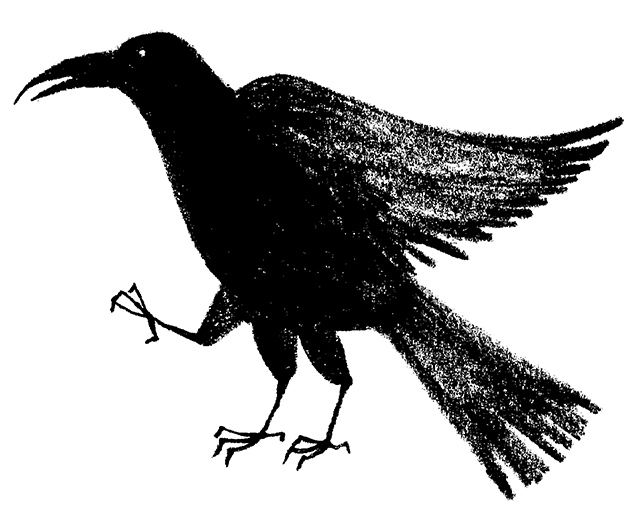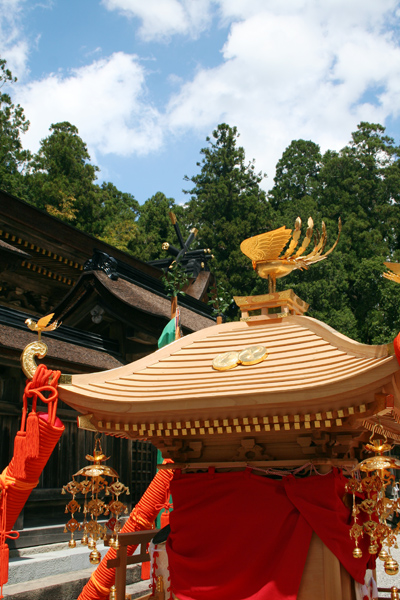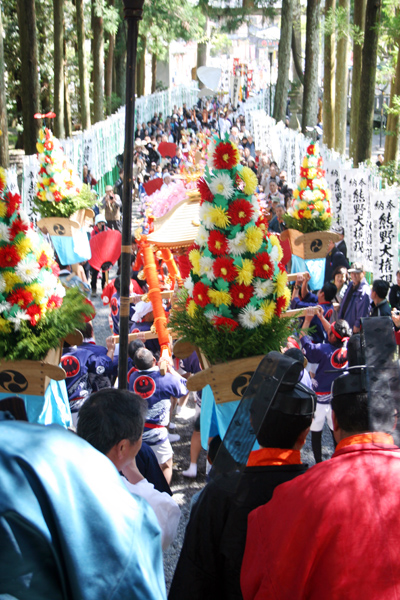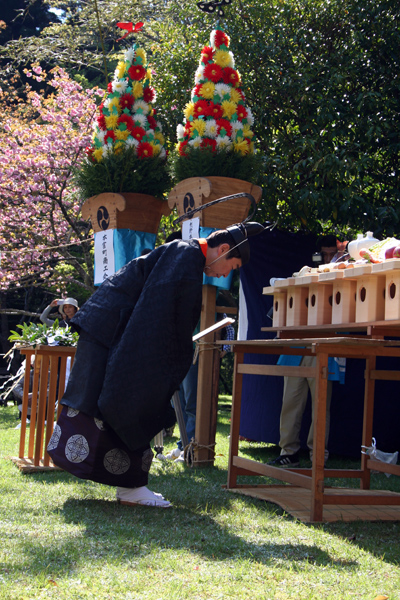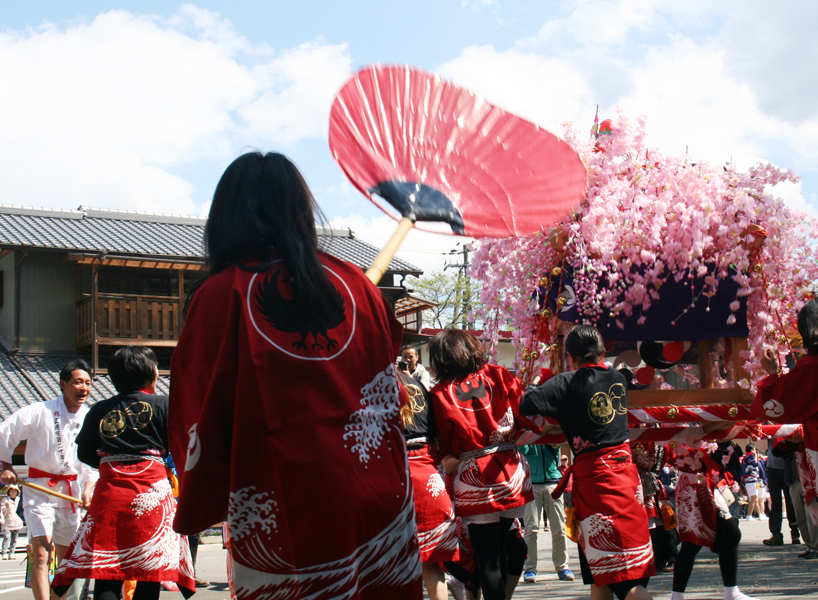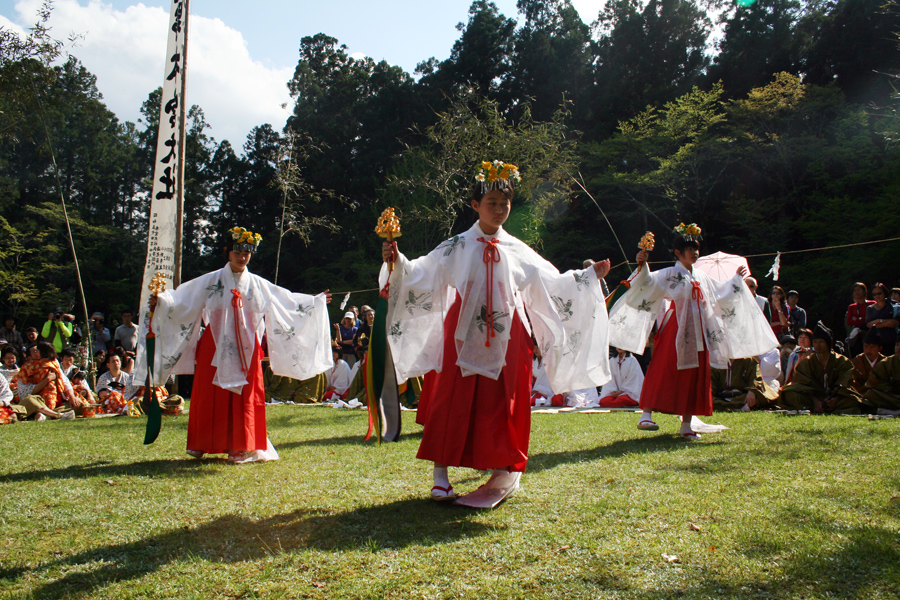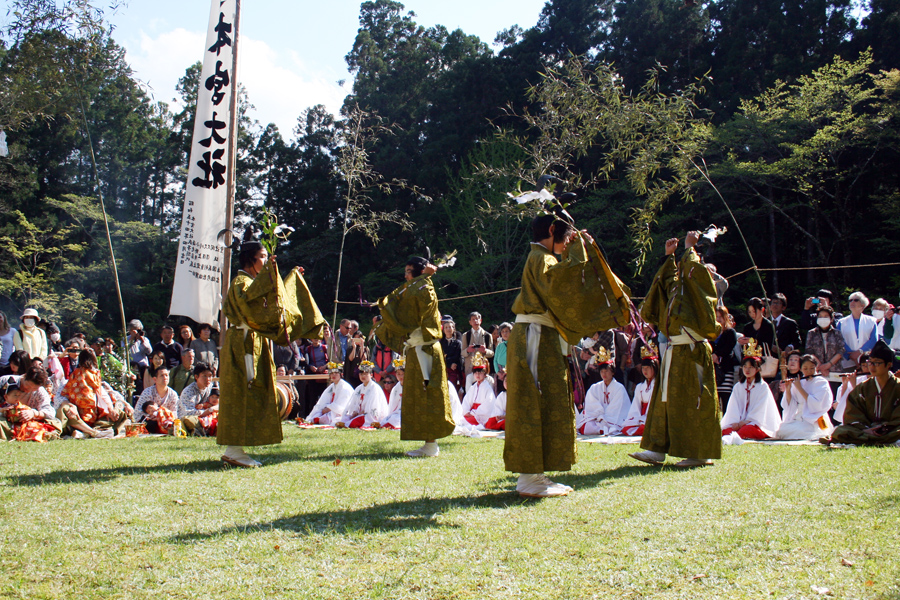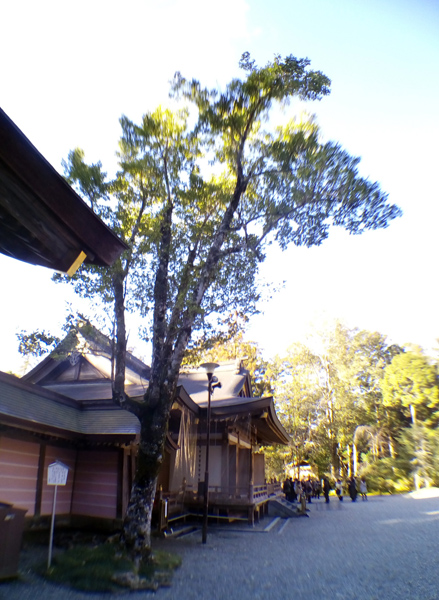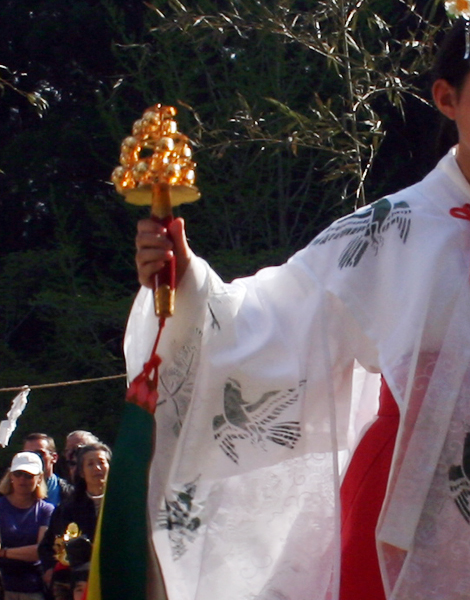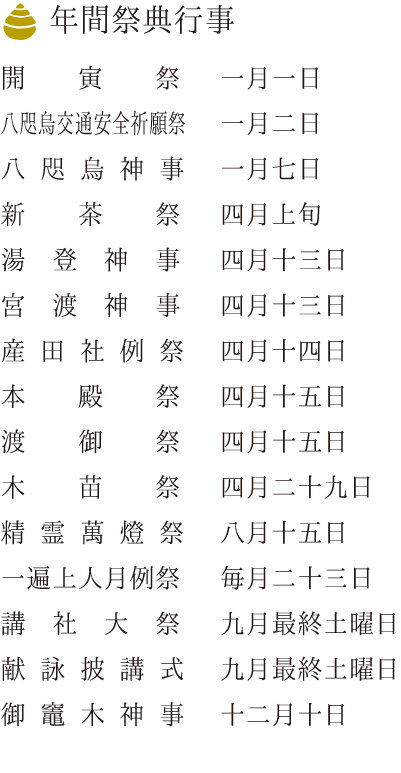未来への再出発の地、蘇りの地、熊野。
神代の昔から熊野の地は果てしなく山々が連なり、熊野古道、壮大な川や滝、巨大な岩山など、人々の信仰の対象となる大自然に囲まれた神秘の場所でした。都から遠く離れ、どの道を選んでもたどり着くのが困難な地。人々にとって熊野は想像することすら難しい憧れの聖地であったのです。飛鳥時代に社殿が建てられた熊野本宮大社は昔から「熊野にいらっしゃる神」という意味の「熊野坐神社(くまのにますじんじゃ)」と呼ばれており、熊野三山の中心的存在でありました。主祭神は「家津美御子大神」。その正体は、日本神話の中でも屈指の英雄である「素戔嗚尊(スサノオノミコト)」です。男女や身分を問わず全ての人を受け入れる懐の深い神様であり、中世には「蟻の熊野詣」と例えられるくらい多くの人々が救いを求めて列をなしました。明治時代まで本殿のあった大斎原(おおゆのはら)は川の中洲に位置しており、高い木々に囲まれたその地に立つと、熊野の神様が優しく迎え入れてくれる気がします。ここに来た人は誰もが神様の懐の中に抱かれ、また再び現実世界に戻っていきます。再出発する力を与えてくれる蘇りの神様なのです。
Shinto Gods of Kumano
In the age of the gods, Kumano was a mysterious place and an object offaith.
It is surrounded by nature, boundless mountains, magnificentwaterfalls, rivers and huge rocky mountains.
Far away from the city, it is difficult to access no matter whichdirection you approach.
Kumano is a sacred place where people long forand can not picture exactly what it is.
Kumano Hongu Taisha was built in the Asuka period (592-710), it referto “Shinto gods of Kumano” since a long time ago.
It is also called“Kumano-ni-masujinjya”. It plays a central role in the Kumano Sanzan.
The
main enshrined deity is Ketsumiko-no-okami. Ketsumiko-no-okamiis
identified with Susano-o nomikoto who is one of the famous heroes in
Japanese mythology.
No matter what gender or social status people are, he
acceptseveryone. He is a broad-minded Shinto god.
There were so many
people visiting this area praying for their salvationduring the middle
ages, it was referred to as “ the ant processions toKumano”.
Until the
Meiji period(1889), Kumano Hongu Taisha was located at Oyunohara, in
between two surrounding rivers.
Gods of Kumano are “gods of revival”.
Once
there, one will have the feeling as if to be welcomed and held by the
gods in a place surroundedby tall trees, receiving the power to restart
and re-enter reality anew.
八咫烏(やたがらす)
ヤタガラスは太陽の化身と言われる三本足のカラスです。「咫(あた)」とは長さの単位で、「八咫=とても大きい」と言う意味です。その三本足は「天・地・人」を表していると言われています。神武天皇が九州から東征する際に遣わされ、熊野から大和への道案内をしました。のちに神武天皇は大和に朝廷を開き、天皇家の祖となりました。そのため八咫烏は導きの神として信仰されており、その姿は熊野牛王神符にも描かれ、熊野の象徴的存在となっています。「勝利に導く」ということから日本サッカー協会のシンボルマークとしてもおなじみです。
Yatagarasu
It is said that the Yatagarasu is a three-legged crow and an incarnation
of the sun.
Ata means unit of length, Yata means huge. These three
legs represent the heaven, the earth, and mankind.
Yatagarasu led
Emperor Jimmu from Kumano to Yamato (Nara) during his eastern expedition
from Kyushu.
There he established a court in Yamato and became the
ancestor emperor of the imperial family.
As a result, Yatagarasu is
believed to be a divine guide. In the Go-o-shimpu Talisman of Kumano,
the shape of Yatagarasu was drawn.
It's existence made it become the
symbol of Kumano.
As a symbol mark of Japan football association, it has
a familiar meaning of “Leads the national team to victory”.
